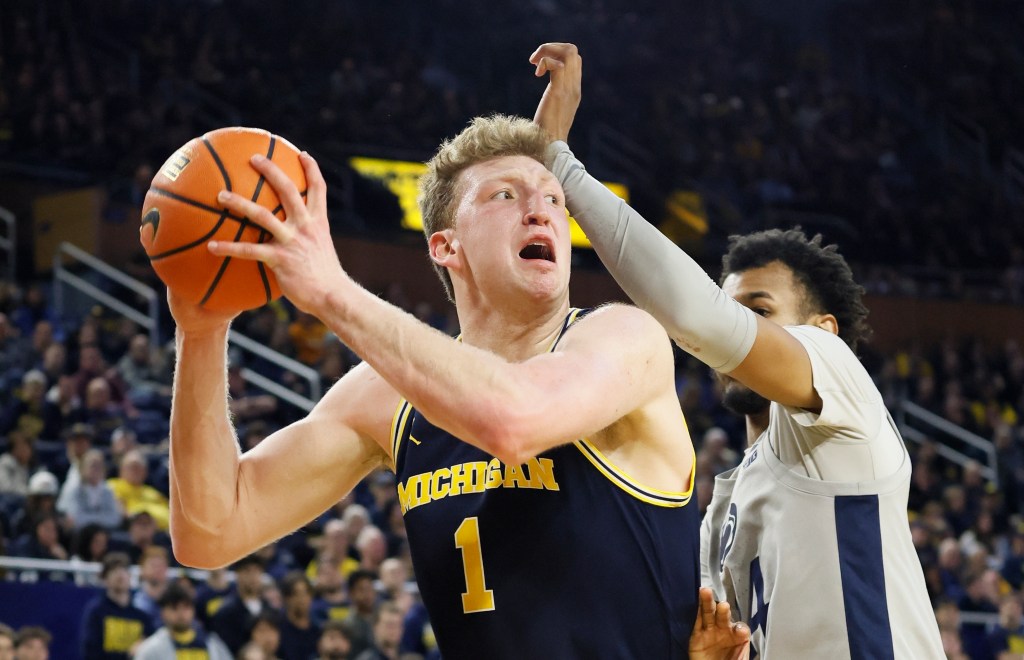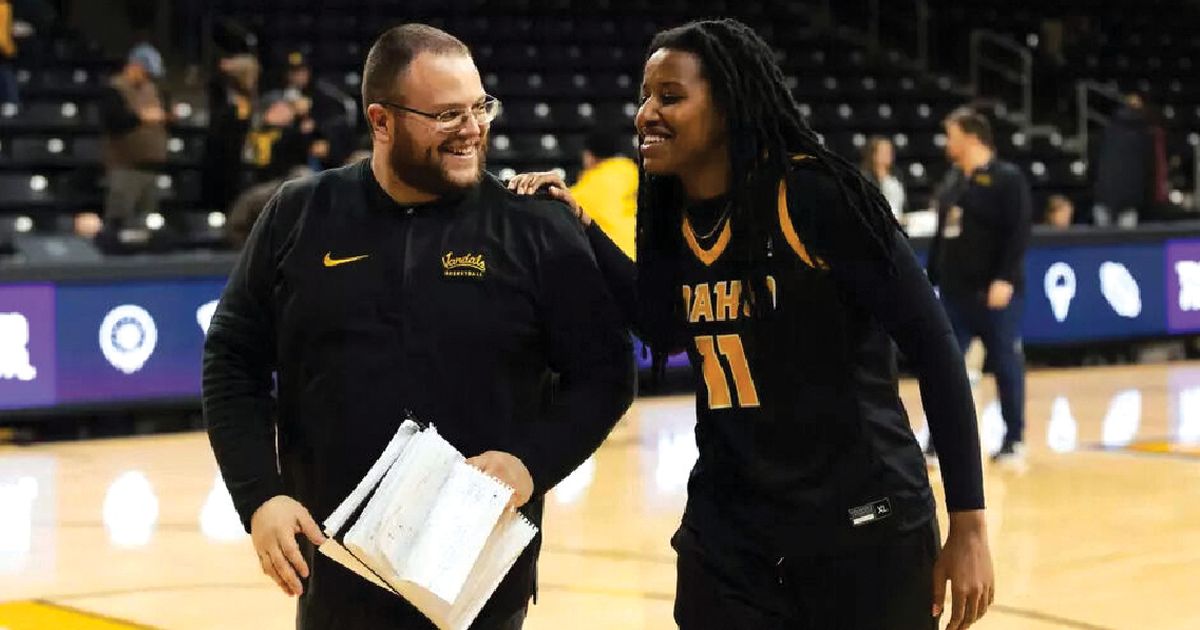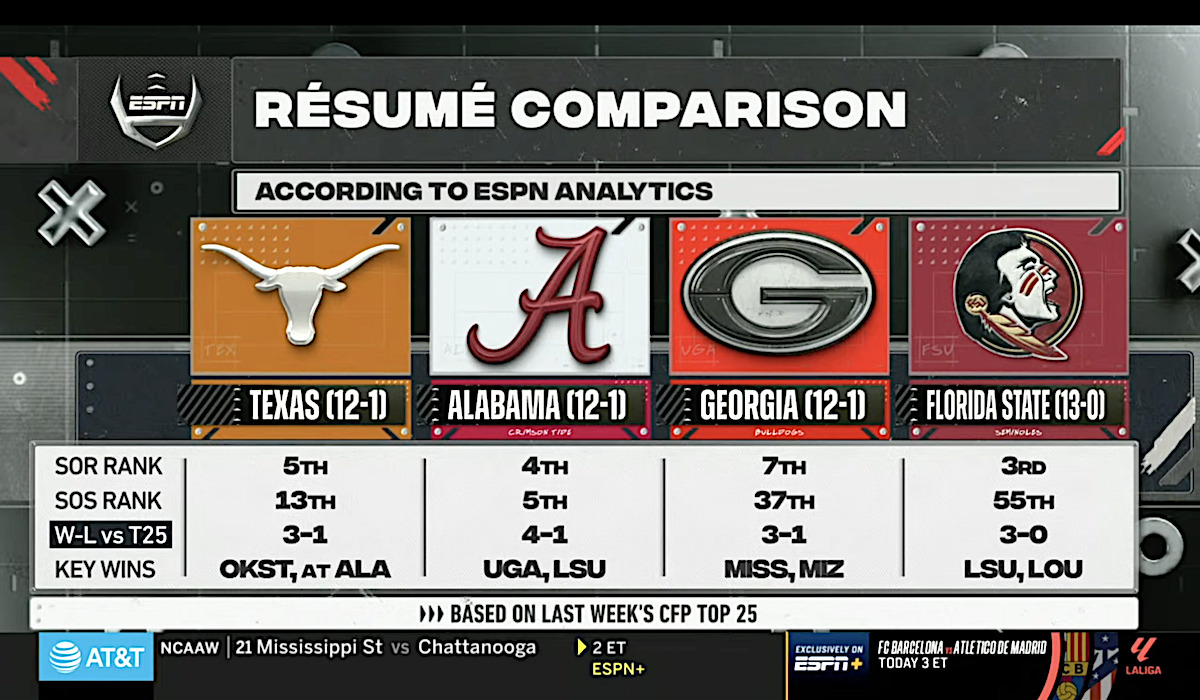Advertisement
NIL
Michigan big man Danny Wolf heads to Nets at No. 27 in the NBA Draft – Macomb Daily
Danny Wolf bet on himself when he made the decision to transfer from Yale to Michigan. He wanted to prove he could play on the perimeter. He wanted to prove he could play against the best in the Big Ten. He wanted to prove he had the talent to play at the next level. Wolf […]

Danny Wolf bet on himself when he made the decision to transfer from Yale to Michigan.
He wanted to prove he could play on the perimeter. He wanted to prove he could play against the best in the Big Ten. He wanted to prove he had the talent to play at the next level.
NIL
Arizona State’s Sam Leavitt to donate commission from NIL apparel sales to teammates
Earlier this week, Arizona State quarterback Sam Leavitt announced a new line of NIL merchandise in partnership with The NIL Store. However, he doesn’t plan to take a penny from the commission. Leavitt is planning to donate the dollars from the sales to his teammates, he said. The collection went live earlier this week and […]

Earlier this week, Arizona State quarterback Sam Leavitt announced a new line of NIL merchandise in partnership with The NIL Store. However, he doesn’t plan to take a penny from the commission.
Leavitt is planning to donate the dollars from the sales to his teammates, he said. The collection went live earlier this week and features sweatshirts, hoodies, t-shirts and jerseys. Terms of the deal were not disclosed.
It’s the latest way of giving back for Leavitt, who has a $3.1 million On3 NIL Valuation. He previously donated dollars from merchandise sales to the Arizona State-focused NIL collective, Sun Angel Collective, last year. Earlier this offseason, he also donated $15,000 to the Pat Tillman Foundation.
The hype continues to grow around Leavitt after he helped lead Arizona State to a Big 12 title and a College Football Playoff appearance a season ago. He threw for 2,885 yards and 24 touchdowns while adding 443 rushing yards and five scores on the ground following his transfer from Michigan State.
Then, in January, Leavitt announced his return to Arizona State through the Sun Angel Collective. In the time since, the Heisman Trophy buzz has been growing as he became one of the top names in college football.
Leavitt’s On3 NIL Valuation ranks No. 9 in the college football NIL rankings. It also puts him at No. 10 in the On3 NIL 100, the first of its kind and defacto NIL ranking of the top 100 high school and college athletes ranked by their On3 NIL Valuation.
As he came off last year’s impressive season, schools lined up to make their transfer portal pitch to Leavitt. However, he ultimately chose to run it back in Tempe, he told On3’s Pete Nakos.
“It was a quick conversation, and then it was squashed,” Leavitt said. “I’m in such a great position here. Got all my best friends, best team to play on. The culture is incredible. I’m at Arizona State, and I’m still getting taken care of.”
Sam Leavitt isn’t the only notable playmaker returning to Arizona State this year. His top receiver, Jordyn Tyson, is also back in the fold. The two established a big-time connection in 2024 as Tyson led the team with 75 receptions for 1,101 yards and 10 touchdowns.
Tyson then announced his return for 2025, also by inking a new deal with Sun Angel Collective. His $1 million On3 NIL Valuation ranks No. 63 in the college football NIL rankings and second on the ASU roster only to Leavitt
NIL
Video game developer EA’s college basketball franchise to make long-awaited return
After a hiatus that lasted nearly two decades, EA Sports has announced the return of the college basketball video game franchise. The game is set to be released some time in 2028, and it has been confirmed that both men’s and women’s teams will be included for the first time. The series was discontinued following […]

After a hiatus that lasted nearly two decades, EA Sports has announced the return of the college basketball video game franchise. The game is set to be released some time in 2028, and it has been confirmed that both men’s and women’s teams will be included for the first time. The series was discontinued following the 2009 release of “NCAA Basketball 10,” which was available to play on PlayStation 3 and Xbox 360.
The last game sold over 150,000 copies across all platforms, which represented a concerning decline in sales from the previous year. The game was not nearly as successful as the college football game that came out that year, though developers discontinued both game franchises within a four-year period.
A primary reason that the college football and basketball franchises were initially discontinued was due to various roadblocks regarding the name, image and likeness of the players. The older games used real players but did not include their names.
With the implementation of the NIL policy in 2021, many things in the college sports world changed drastically. With players now having the opportunity to be compensated in a plethora of ways, this policy opened up the opportunity to bring back the beloved college sports video games.
Hope Hassmann, an incoming junior guard for the Idaho Vandals, is excited for the release of the game due to the value it will bring to the college basketball landscape.
“All kids grow up playing video games, especially the sport they want to play,” Hassman said. “I think it’s just a great opportunity for everybody to get their name out there, especially smaller schools who can get their name on the map.”
Hassmann grew up playing the college basketball games with her older brother, but says she has a special appreciation for the games now that she is an active college player. One of her favorite aspects of the return of the games is that players are paid to participate.
“Seeing how much time and dedication we put towards our sport, it’s so cool to see that it pays off and we’re now getting money and brand deals. I think it’s incredible. I think it just shows the growth of college sports and especially women’s basketball,” Hassmann said. “It’s cool that we get the ability to be paid. It’s such a cool opportunity to be a part of that in this new era of college sports.”
EA brought back the college football games starting in 2024, and the sales have increased exponentially. EA earned $500 million in revenue in the first two weeks, with 2.2 million people opting to pay extra for the deluxe pre-order bundle. Though the college basketball series will not officially make its return until 2028, it is likely that the game will succeed more than the older games, along with introducing more people to the sport.
“I think there’s a lot of things like that that can come out of having a college basketball game,” said Arthur Moreira, head coach of the Idaho women’s team. “I think you can draw a lot of attention not only to women’s basketball, but to college basketball in general. I think it’s the right time to continue to develop the game.”
In the past handful of years, women’s basketball has rapidly improved in mainstream popularity. The women’s march madness tournaments as well as the WNBA have both seen a steep increase in ratings.
“I feel like it’s great that people are now wanting to watch. To be in the era of women’s college basketball and seeing the growth of it, I just think it’s a really cool opportunity to grow the game,” Hassmann said. “In the two years that I’ve been in college, I think there has been a dramatic change. All our hard work is paying off in a way that people are excited to watch and there’s so much talk around women’s basketball.”
Former Vandal and current New Mexico State forward, Julius Mims, predicts that the new game will be “a big hit,” similar to the new college football games. Mims recalls playing NBA 2K games with friends growing up, specifically in the mid 2010s. He thinks the biggest challenge that developers of the game will face is dictating ratings for the players on each team due to the number of Division-1 players compared to the NBA.
Moreira spent a lot of time playing the college basketball franchise during his college years. Each year when the new game was released, he and his friends would spend two to three days editing every single roster and adding the players’ names.
Moreira said he spent most of his playing time focusing on the recruiting aspect rather than playing the game, joking that he got his start in college recruiting on NCAA Basketball 10. Once he began his coaching career, his strengths remained the same, establishing himself as an elite recruiter.
Though he does not have much time for video games these days, Moreira looks forward to playing as the Vandals during the offseason.
Moreira emphasized the impact that video games have on today’s youth. He says that the game will be a good gateway to college sports. He became a Newcastle United FC fan in 1997 because he liked using them in a soccer video game.
“The games give kids a chance to get familiar with it. Maybe they’ll find some school that has the color scheme that they like,” Moreira said. “All of that brings new fans in. Our youth is so invested into gaming and in the virtual world that I feel like sometimes it is the best way to get their attention.”
Moreira has friends in Brazil who became interested in college football after playing the new college football games, and he thinks the basketball games will have a similar effect.
“It’s all part of growing the game,” Moreira said. “There’s a lot of sports that I actually started watching because the game was fun.”
NIL
How will it work? CFB coaches, AD’s scramble ahead of new ‘pay for play’ era
The new college football “pay for play” era is just 32 days from kickoff, and no one can say for sure how it’s all going to work. Coaches and administrators are scrambling to establish ground rules and ensure everyone is on the same page, especially when factoring in Name, Image, and Likeness (NIL) policies. How […]

The new college football “pay for play” era is just 32 days from kickoff, and no one can say for sure how it’s all going to work. Coaches and administrators are scrambling to establish ground rules and ensure everyone is on the same page, especially when factoring in Name, Image, and Likeness (NIL) policies.
How are high schools involved in NIL?
That also includes the high school ranks. During the keynote address at the Texas High School Coaches Association convention on Sunday, July 20, Texas Longhorns head coach Steve Sarkisian called on high school coaches to resist outside influences that could compromise their players’ development. That includes agents who now serve as the go-between in player negotiations with college programs.
“I think there’s a responsibility of the high school coaches to not just fall prey to, well, now there’s money and there’s agents and my role has been diminished,” Sarkisian said. “I think they need to be bullish to not let their role be diminished. And we would prefer that, quite frankly. Agents are going to be a part of this, and let’s not act like they’re not.”
Sarkisian said college football has been changing for decades, and though this is one of the biggest changes in the game’s history, high school leaders need to stay present.
“You are still the ones raising your kids. You’re still the ones that they look to for guidance.” Sarkisian said. “This idea right now of what’s happening, in my opinion, is because of the agents. They’re going to shop your kids. And we can’t lose sight of trying to offer really good advice.”
What about contracts for high schoolers?
When the season kicks off, Sarkisian’s Longhorns may very well be ranked No. 1 in the nation. His message to more than 18,000 coaches resonates. He also answered questions about player contracts and what to expect during negotiations with college programs. He made sure to point out the one area he believes will cause problems: long-term, high-dollar contracts for high school graduates.
“Let’s paint a picture,” Sarkisian said. “We sign a young man to a three-year contract. That should mean, in my opinion, if he’s on a three-year guaranteed contract, that he has to stay at my university for three years. The problem I have with that is at the end of year one, if Billy doesn’t like the way it’s going, he’s a free agent. He can go in the portal and leave. That doesn’t make sense to me. That’s not a good business model.”
Will cheating be an issue?
Athletic departments will also have to combat those that may push the boundaries of what’s legal in the next few months and years. The College Sports Commission, formed just days after the landmark House v. NCAA settlement, is still in the process of establishing ground rules and determining punishments for those who break the rules.
Each school has a budget of $20.5 million to allocate to its college sports programs. Outside NIL deals will tip the balance of power, but at this point, no one is sure how much. ACC Commissioner Jim Phillips urged his members to adhere to the rules at the conference’s season kickoff event.
“It’s about setting up a standard with transparency,” Phillips said. “We haven’t had that in the NIL era. Sometimes we can’t help ourselves. People know what the rules are relative to the $20.5. They know what legitimate NIL is. You can play in the gray area if you want, but all that does is undermine the new structure.”
When will it all be settled?
Phillips reiterated the need for government oversight and continues to advocate for federal legislation to establish guardrails. However, that could take months if it happens at all.
Which means, as the season fast approaches, those in charge will need to stay vigilant.
“Is the system perfect?” Sarkisian asked, “No. Are we trying to get better at cleaning it up to making it better for all parties involved? I do think we are. Yes. But we’re definitely a work in progress right now.”
Sarkisian is optimistic and believes that, eventually, college football will get to a good place, but he’s also looking forward to putting all the NIL talk aside and getting back on the field. The Longhorns begin fall practice on July 30, along with many other major programs around the country.
contributed to this report.
NIL
Page not found | Zagsblog
Page not found | Zagsblog Sorry, but the page you are looking for doesn’t exist. Home Page Link 1
Sorry, but the page you are looking for doesn’t exist.
Home Page




















































